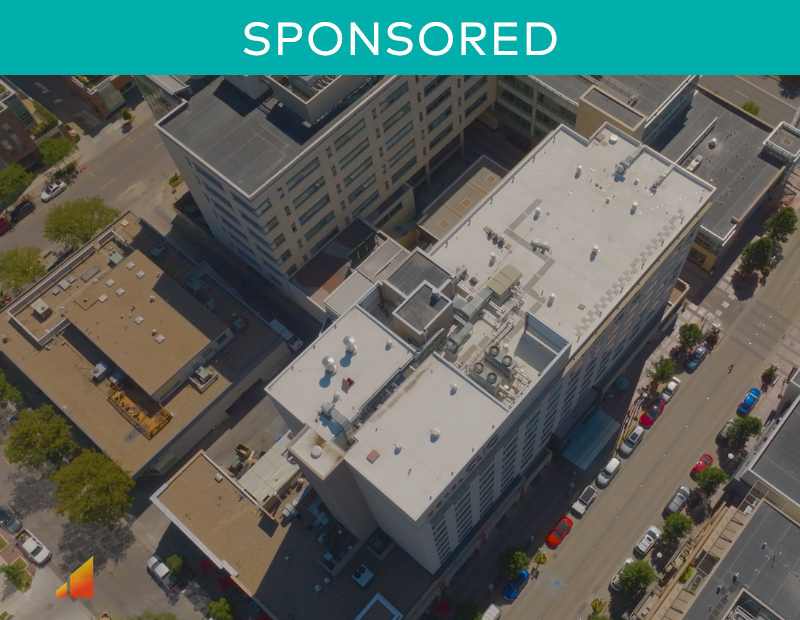5 Ways to Maximize Return on Your Building’s Roof
With a proper management plan, property owners can turn even mid-life roofs from what has historically been considered a liability, into an asset.
“Twenty years of research and the backing of Lloyd’s, the leading global market for insuring specialty risks, stands behind the concept that reconditioning, versus premature replacement, is financially advantageous and environmentally friendly, turning a property’s roof from a potential liability into an asset.”
It’s time to rethink your roof.

For too long, roofs have been the bane of the Commercial Property industry, taking the heat (literally and figuratively) when it comes time to buying, selling or leasing a building. But 20+ years of crunching data about premature and costly roof replacement say that doesn’t need to be the case. In fact, with the proper management plan, property owners can turn even mid-life roofs from what has historically been considered a liability, into an asset.
First off, this isn’t just another article about regular inspections and maintenance. While helpful to some degree, they tend to just go down the same rabbit hole of deferred maintenance and eventually total replacement. Instead, property executives need to start thinking about their commercial buildings’ roofs as a financial tool to strengthen their bottom line, save upfront capital, and seriously increase a building’s ROI. Here are the top 5 ways to do it.
1. Recondition, don’t replace
Perhaps the most important factor to know is that, across the country, the great majority—maybe up to 80 percent—of roofs are replaced prematurely. That’s bad news for your bottom line, and even worse news for the environment. By reconditioning a roof, instead of replacing it, our customers alone have kept almost 2 million metric tons of waste out of landfills and made progress toward their sustainability goals. Imagine if every building owner did this.

Whenever possible, from the standpoint of longevity, materials and assembly, reconditioning is the right choice. By reconditioning and providing a warranty, all parties are working from the perspective of minimizing risk to the building and the owner, without sacrificing quality. Reconditioning provides the best solutions which are “platform agnostic”—not tied to any one manufacturer or resolution—meaning the best and most effective material and technique for the project, at a fraction of the cost of replacement.
The most important distinction between reconditioning and repair is that when it comes to applying the solution, this isn’t just a ‘slap-on, cover, band-aid’ approach designed to simply buy a little time. A true reconditioning job goes beyond regular roof repairs and works to not only address the issue at the source, but also prevent any further damage or problems going forward—once again, minimizing risk to the roof and the building owner.
2. Guarantee performance with a warranty
A warranty makes any program secure—and tenants, owners, Board Members and shareholders all love performance security. While a manufacturer’s warranty might seem sufficient, a truly comprehensive roof warranty is always better. Importantly, that warranty can be transferred to a new owner, so the roof is always covered, regardless of how many times the building changes hands. And with a vested interest in extending the life of an existing roof, the customer’s ROI always comes first.
Typical exclusions like laps, seams, penetrations, parapets, curbs, insects and radiation exposure don’t exist. By combining reconditioning with a warranty, building owners have the best of both worlds, with a roof that’s effectively as good as new—the building interior stays dry, and if it doesn’t, the comprehensive warranty protects you against unpleasant surprise expenditures for corrections or extended reconditioning. All that comes at only a fraction of the cost of a new roof.
3. Leverage buying and selling
The state of the industry right now can be challenging, and commercial properties—especially offices—are facing real headwinds. A slower return by employees to regular offices, post-Covid, coupled with higher interest rates have taken a real toll. Transactions in this environment often include bonus deals, such as bigger tenant finish allowances and longer rent reductions, that help protect headline rents and building values. Imagine turning your expected (or worse, unexpected) roof spend into an updated lobby or polished building façade that drives increased appeal to current and prospective tenants.
Acquisition and disposition are critical times when roof condition can become a major deal point, and reconditioning is a cost-saving measure that can bring untold benefits. Reconditioning means leveraging negotiations to bring financial certainty with a guarantee of performance to whichever side of the table you’re on.
4. Defer capital expenditures
In an environment of high interest rates, the value of deferring cash outlays is much greater than it used to be. With roof reconditioning instead of replacement, building owners don’t have to borrow expensive capital to replace a roof—if borrowing is even possible—providing as much cash as possible that can be used for other purposes.
A roof replacement is the least sexy spend, with almost zero visibility. But by deferring an unnecessary roof replacement, building owners can invest in amenities and improvements that will provide a greater return with attractive upgrades that tenants will see and appreciate such as new lighting, freshened interiors, or high-tech systems and smart building features.
5. Apply across the portfolio
The more building owners can do at scale, the greater the savings across their portfolio. If the savings on one building are great, imagine what those savings could look like across five buildings, or 50, or 500! Extrapolate the money saved over a portfolio and suddenly budgets can be better spent on projects of greater importance, with emergent need or urgency. Combine those savings with the peace of mind that every project is ultimately backed with assurance from Lloyd’s, and you’ll begin to think of your roof as an asset rather than a liability.
Roofing realities
For more than 20 years our company has helped customers realize the savings and security that reconditioning a roof can provide, especially when backed by the assurances of two decades of scientific data and analysis about when and how roofs fail, and when and why they don’t. In addition to data, the process relies on a proven, scientific underwriting process for examining and evaluating roof systems, including field inspections, non-destructive moisture testing and lab analysis of the roof membrane; providing proprietary and extensive reconditioning scopes of work; and careful selection of materials to be used in reconditioning, including quality control and inspection at every stage of completion, at no additional cost to the customer.
Of course, not every roof is right for a reconditioning solution, but a great majority are. Before you make the investment in a costly new roof, consider exploring a roof reconditioning solution. Reward your bottom line by turning your roof from a liability into an asset. Put your budget to work in a place that will reap greater returns and save the expense of a complete reroof until you really need it.
Greg Hinkle is CFO of Fortis. He has more than 40 years of corporate finance experience, first as a partner with a Big 4 accounting firm serving REITs and other property owners, then as CFO of large global asset managers and their funds, including private equity real estate funds.







You must be logged in to post a comment.